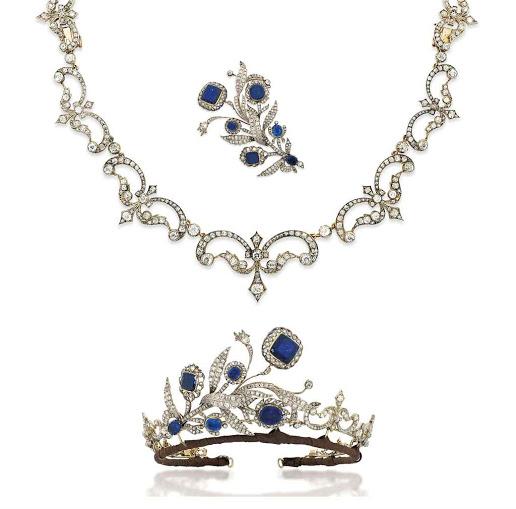Today’s Tiara Tuesday comes from the Smithsonian Museum and does double duty by intro'ing us into May's spectacular birthstone, Emerald.
The Marie-Louise Emerald and Diamond Diadem.
But wait? Why am I seeing two diadems and one of them clearly does not contain emeralds!
Well my sparkles you can blame Van Cleef & Arpels...Well you could have in the 50’s.
The whole story:
“Napoleon gave the Diadem to his second wife, the Empress Marie-Louise, on the occasion of their marriage. Originally the diadem, commissioned in 1810, was set with emeralds, which were replaced in the mid-1950s, with turquoise. It was made by Etienne Nitot et Fils of Paris. The diadem was one piece of a parure that also included a necklace and earrings (now in the Louvre) and comb (disassembled), all in emeralds, diamonds, silver and gold. Marie-Louise bequeathed the diadem and accompanying jewelry to her Hapsburg aunt, Archduchess Elise. The jewelry was acquired by Van Cleef & Arpels from one of Archduchess Elise’s descendants, Archduke Karl Stefan Hapsburg of Sweden, in 1953, along with a document attesting to their provenance. During the period from May 1954 to June 1956, the emeralds were removed from the diadem by Van Cleef & Arpels and sold individually in pieces of jewelry. A newspaper advertisement placed by the company in 1955 promised: “An emerald for you from the historic Napoleonic Tiara…” Sometime between 1956 and 1962, Van Cleef & Arpels mounted the turquoise into the diadem. In 1962, the diadem, with turquoise, was displayed in the Louvre Museum in Paris along with the necklace, earrings, and comb, as part of a special exhibition on Empress Marie-Louise. Marjorie Merriweather Post purchased the diadem from Van Cleef & Arpels and donated it to the Smithsonian in 1971.” source
The diadem definitely is beautiful with the turquoise, and I am so glad that VCA kept the tiara intact! I can hardly imagine how stunning it must have been before the emeralds were pulled (the depiction with the emeralds is a facsimile.)
Kathleen Marino M.A, G.G., AJP, NAJA

















